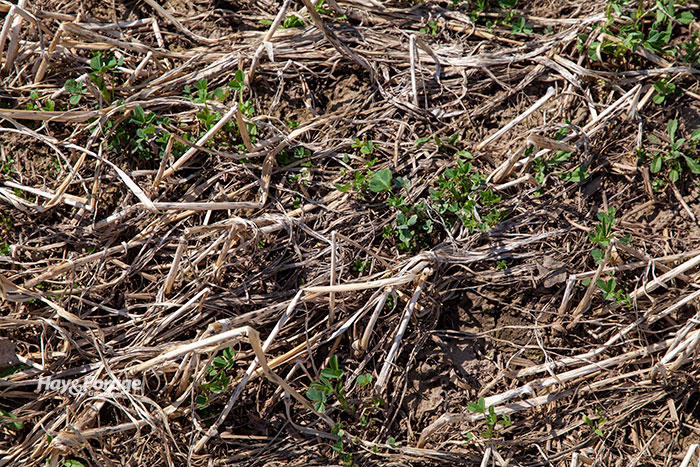The toughest of all alfalfa decisions |
| By Mike Rankin, Managing Editor |
|
|
 There are many decisions to be made over the course of an alfalfa stand’s life, including what variety to plant, when to cut each year, how many times to cut, and decisions centered on fertility and pest control. Perhaps no decision is more difficult than what to do when an alfalfa stand enters a growing season firing on only half of its cylinders because of winter injury. These are the stands that are not totally dead but rather have a reduced number of fully productive plants. In these situations, a dairy producer has four options if fields are in a typical alfalfa-corn silage rotation, according to Jeff Semler. The county agriculture agent with the University of Maryland Extension lists these options as follows: 1. Keep the field for the duration of the season and accept the reduced yield. 2. Take just the first cutting and then plant a short-season corn hybrid for silage. 3. Terminate the field early and plant a full-season silage corn. 4. Interseed the field with non-alfalfa species such as red clover or a cool-season grass, which can also be followed with a warm-season annual. More corn silage “By terminating the alfalfa and planting corn for silage early, you give up all alfalfa production on the field for the current year, but you ensure maximum silage yields from early planting and using a full-season hybrid,” Semler says. “Still, this choice may not seem too appealing if you need the alfalfa in the short run, or if it’s a relatively new stand and you want to capture more return on the establishment investment.” The other option that some farmers choose is to take the first-cutting of alfalfa, terminate the stand, and then plant corn. This helps fill a short-term forage need, but it’s done at the expense of a reduced corn silage yield due to late planting. Semler says it’s important to receive adequate moisture and control emerging weeds when taking this approach. Interseed other species Autotoxicity makes it nearly impossible to seed alfalfa back into alfalfa successfully, but interseeding other species into an existing alfalfa field is a proven practice for extending stand life. “When considering interseeding options, you must decide if you want fast or permanent forage,” Semler explains. “In the latter case, a cool-season grass such as orchardgrass or novel endophyte tall fescue works well. Of course, additional forage yield won’t be realized until later in the growing season.” The extension agent says that perennial forage is the right choice for younger alfalfa stands where the life of a marginal stand needs to be extended. “Some producers do this regularly after two or three years, even when alfalfa winterkill isn’t an issue,” Semler notes. “Another biennial option is to use red clover, but realize it is slow to dry for baled hay.” Annual (Italian) ryegrass is another interseeding option if the desire is to get fast, high-quality forage. It grows rapidly and will continue to produce throughout the summer if adequate moisture is received. “Another option to consider is to interseed oats early and follow it with warm-season annuals such as sudangrass or millet after first cutting or first grazing,” Semler says. “Once established, these annuals can be cut or grazed on an alfalfa schedule, and they complement alfalfa well, bringing an energy component to the protein in the alfalfa.” Late-season options As the growing season progresses, further decisions will need to be made as to how forage production can be bolstered, assuming a perennial grass wasn’t interseeded. Semler suggests no-tilling a winter cereal such as rye or triticale after an early fall harvest. These can be harvested the following spring and followed with corn for silage. Another option is to plant spring oats into the stand during late summer. This will provide some additional fall forage. It’s also feasible to mix spring oats with a winter cereal to have both a fall harvest of the oats and a spring harvest of the winter annual forage. “The right thing to do varies with each year and each farm situation,” Semler says. “The problem is that the best choice is almost always dependent on future weather conditions that can never be predicted at the time of the decision.” |
